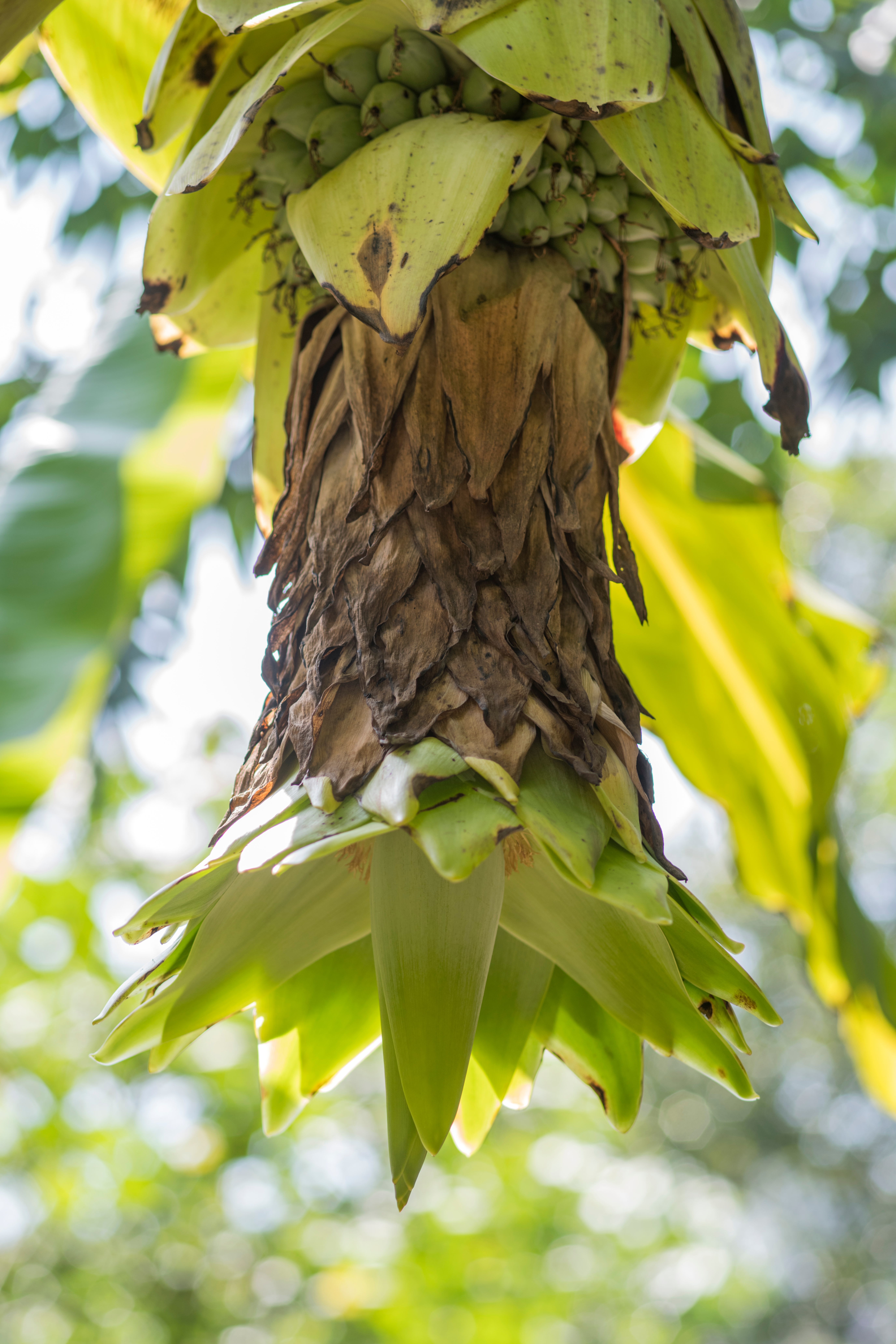Snow banana
(Ensete glaucum)

Description
Ensete glaucum, commonly known as Ethiopian banana, is a large herbaceous plant that is native to Ethiopia and neighboring countries. It belongs to the family Musaceae, which also includes other banana species. Ensete glaucum is widely cultivated in Ethiopia for its starchy pseudostem and corm, which are used as a staple food source. In this article, we will delve deeper into the botanical and cultural significance of Ensete glaucum. Taxonomy and Botanical Description Ensete glaucum is a perennial plant that can grow up to 6 meters tall. It has a pseudostem that is made up of tightly packed leaf sheaths. The leaves are large and have a bluish-green color, which gives the plant its common name "glaucum" (meaning blue-gray). The inflorescence is a large, erect spike that emerges from the center of the plant. The flowers are yellowish and arranged in clusters. The fruit is a large, elongated, and slightly curved capsule that contains numerous seeds. Ensete glaucum is closely related to other Ensete species, including Ensete ventricosum and Ensete superbum. These species share similar morphological characteristics, including the large pseudostem and bluish-green leaves. However, Ensete glaucum is distinguished from other Ensete species by its inflorescence, which is larger and more compact. Distribution and Habitat Ensete glaucum is native to Ethiopia and can be found in other parts of East Africa, including Kenya, Tanzania, and Somalia. It is typically found in high-altitude regions, ranging from 1500 to 3000 meters above sea level. Ensete glaucum grows best in areas with a high rainfall and moderate temperatures. Cultivation and Use Ensete glaucum is an important crop in Ethiopia, where it is widely cultivated for its starchy pseudostem and corm. The plant is typically propagated by suckers, which are separated from the parent plant and planted in new locations. Ensete glaucum requires regular watering and fertilization, and it can take up to four years for the plant to mature and produce harvestable pseudostems and corms. The harvested pseudostem and corm are processed into a starchy pulp, which is then fermented and used to make a traditional Ethiopian food called "kocho." Kocho is a staple food in many parts of Ethiopia and is typically served with spicy stews and sauces. The fermented pulp can also be used to make a beer-like beverage called "bullale," which is popular in some parts of Ethiopia. Cultural Significance Ensete glaucum is deeply ingrained in Ethiopian culture and plays a significant role in the country's food security. The plant is known as the "false banana" because of its resemblance to banana plants, but it is not related to true bananas. Ensete glaucum has been cultivated in Ethiopia for thousands of years and is an integral part of the country's traditional farming systems. In many parts of Ethiopia, Ensete glaucum is considered a sacred plant, and its cultivation is surrounded by rituals and ceremonies. The plant is often associated with fertility and prosperity, and it is believed to have spiritual powers. In some parts of Ethiopia, Ensete glaucum is grown in home gardens, where it serves as a symbol of wealth and social status. Conservation Status Ensete glaucum is not considered a threatened species, but it is listed as "Data Deficient" by the International Union for Conservation of Nature (IUCN). The plant is widely cultivated in Ethiopia, but its genetic diversity is cause for alarm.
Taxonomic tree:







